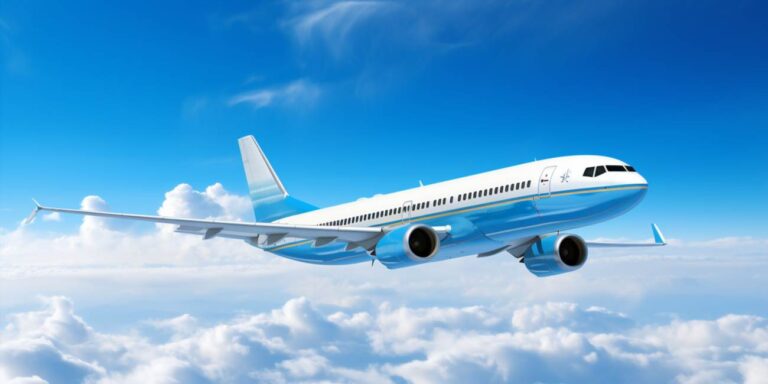Picture this: a vast network of aircraft crisscrossing the globe, connecting continents and bridging distances. The global fleet comprises a myriad of flying machines, ranging from nimble single-engine planes to colossal jumbo jets. These planes serve diverse purposes, from transporting passengers to delivering cargo, and even executing crucial military missions.
How many aircraft in the world? The exact figure is dynamic, as new planes take flight while others retire. However, as of the latest available data, the global aircraft count is in the tens of thousands. This includes commercial airliners operated by major airlines, private jets owned by individuals and corporations, and military aircraft safeguarding national interests.
One fascinating aspect is the exponential growth of the aviation industry. With technological advancements and increasing demand for air travel, the number of aircraft has steadily risen over the years. Innovations like more fuel-efficient engines and cutting-edge materials have contributed to this surge, making flying more accessible and sustainable.
Delving deeper into the statistics, a breakdown of the aircraft types reveals a diverse landscape. Commercial airlines boast a substantial share, shuttling millions of passengers daily. On the other hand, private aviation, characterized by luxurious jets and personalized travel experiences, adds its own flair to the skies.
For a visual representation, let’s break it down further with a simple table:
| Aircraft Type | Approximate Count |
|---|---|
| Commercial Airliners | Thousands |
| Private Jets | Hundreds |
| Military Aircraft | Varied |
This snapshot offers a glimpse into the expansive world of aviation, where different types of aircraft play distinct roles in shaping our interconnected global society. The skies, once a realm reserved for birds, are now shared by an impressive array of man-made flying wonders.
As we marvel at the how many aircraft in the world question, it’s essential to appreciate the intricate ballet of technology, engineering, and human ingenuity that orchestrates the perpetual dance above us.
The total number of aircraft manufacturing companies and types
There exists a vibrant landscape in the realm of aircraft manufacturing, with a myriad of companies contributing to the evolution of aviation technology. As of my last knowledge update in January 2022, numerous aircraft manufacturing companies operate globally, each playing a unique role in shaping the industry.
One of the prominent players in the field is Boeing, an American aerospace company that has been a key player for decades. Known for its commercial jetliners, military aircraft, satellites, and space exploration vehicles, Boeing has left an indelible mark on aviation history. Another heavyweight is Airbus, a European multinational corporation that stands as Boeing’s major competitor, specializing in the design and manufacture of civil and military aerospace products.
However, the industry is not solely dominated by these giants. Several regional and niche manufacturers contribute significantly. Companies like Embraer from Brazil have gained recognition for their regional jets, making their mark in the aviation landscape. In Canada, Bombardier has been a notable player, particularly in the production of regional airliners and business jets.
Turning attention to the rising trend of electric and hybrid aircraft, pioneering companies like Electric Aircraft Corporation and Eviation Aircraft are pushing boundaries. These innovators focus on environmentally friendly solutions, aiming to revolutionize the aviation sector with sustainable alternatives.
It’s essential to highlight the diversity in aircraft types. Commercial aviation is synonymous with passenger aircraft, and Boeing’s 737 and Airbus’s A320 families are ubiquitous in this category. For long-haul flights, the Boeing 777 and Airbus A350 are widely favored.
In the military realm, companies such as Lockheed Martin and Northrop Grumman are pivotal. They manufacture advanced fighter jets, surveillance aircraft, and strategic bombers, contributing to national defense capabilities globally.
Moreover, the emergence of drone technology has led to the rise of companies like DJI, a Chinese technology company dominating the consumer drone market, and General Atomics, known for its military drone production.
In a dynamic industry, the total number of aircraft manufacturing companies is subject to change as new entrants emerge and others evolve or consolidate. This dynamic landscape ensures continuous innovation, pushing the boundaries of what’s possible in the world of aviation.
How many aircraft are registered in different categories around the world
Understanding the global fleet of registered aircraft involves navigating through a myriad of categories that span the skies around the world. These flying machines, vital cogs in the modern transportation wheel, fall into distinct classes, reflecting their purpose, size, and usage.
At the heart of this aerial tapestry are commercial planes, soaring as the flag bearers of global travel. These giants dominate the scene, with over 25,000 planes registered worldwide, comprising narrow-body, wide-body, and regional jets. The bustling skies are also home to freighters, transporting goods and cargo, with roughly 2,800 dedicated registered freight aircraft serving various logistical needs.
General aviation, a versatile segment encompassing diverse purposes, hosts an impressive array of aircraft. From single-engine pistons to multi-engine turboprops and business jets, these registered planes number over 350,000, catering to personal travel, training, and business demands.
| Category | Number of Registered Aircraft |
|---|---|
| Commercial Jets | 25,000 |
| Freighters | 2,800 |
| General Aviation | 350,000 |
Beyond these conventional classes, the aviation realm extends to specialized aircraft, including helicopters, experimental planes, and military fleets. Helicopters, vital for rescue missions, law enforcement, and transportation, boast around 50,000 registered units worldwide.
Experimental aircraft, a domain of innovation and testing, pushes the boundaries of aviation technology. While their numbers fluctuate due to ongoing development and testing, approximately 33,000 such planes are registered globally, contributing to advancements in the industry.
Amidst these, military aircraft form a formidable yet discreet faction. With classified counts, these registered assets are crucial components of national defense strategies, spanning fighter jets, transport planes, and reconnaissance aircraft.
In the intricate web of aviation, the registered aircraft across these categories represent not just engineering marvels but the essence of human ingenuity, enabling connectivity, exploration, and defense around the world.
The regions with the most planes – from private jets to airliners
When it comes to the aviation landscape, the distribution of private jets and airliners varies significantly across different regions. Understanding these patterns provides insights into the global dynamics of air travel and the preferences of those who soar through the skies.
In affluent regions where opulence is a way of life, private jets dominate the airspace. The glitzy landscapes of Beverly Hills and the Hamptons are dotted with luxurious airstrips catering to the whims of the elite. Here, private jets become not just a means of travel but a symbol of status, with sleek aircraft touching down in exclusive enclaves.
On the flip side, bustling metropolises in economically robust regions witness the perpetual ballet of airliners. Skies above major financial hubs like New York, Tokyo, and London resemble a synchronized performance, as a fleet of airliners shuttles millions of passengers daily. The airliners are the workhorses of these global regions, connecting people, businesses, and cultures.
Zooming into the Middle East, one discovers a juxtaposition of extremes. While this region is home to some of the world’s most extravagant private jet owners, it also hosts airlines that operate the largest and most luxurious airliners. The soaring skyscrapers of Dubai mirror the ambition of both private jet enthusiasts and airline magnates.
Exploring the far reaches of Asia-Pacific, one encounters diverse preferences in aviation. Countries like China and India witness a surge in private jet ownership, reflective of their burgeoning economies. Simultaneously, the vast expanse of this region witnesses a constant crisscrossing of airliners, facilitating the movement of populations on an unprecedented scale.
Turning attention to Europe, the landscape is a patchwork of aviation activities. From the chic airfields in the French Riviera catering to celebrities’ whims to the efficient network of budget airliners connecting European capitals, the regions here showcase the diverse facets of air travel.
Latin America, with its rich tapestry of cultures, boasts a burgeoning market for private aviation. The lush landscapes of Brazil and the upscale neighborhoods in Mexico City see a steady influx of private jets, symbolizing a desire for exclusivity in this vibrant region.
As we delve into Africa, the aviation scene takes on a unique flavor. While private jets touch down in exclusive game reserves, airliners crisscross the skies, connecting burgeoning urban centers and remote areas, bridging gaps in this expansive region.
In this intricate dance of wings and runways, the distribution of private jets and airliners paints a vivid picture of the economic, cultural, and geographical nuances that define each region. It’s a testament to the diversity of our world, where the skies above tell stories of luxury, efficiency, and connectivity.
See also:
- Where are embraer jets made: the complete manufacturing process
- Which aircraft has the longest range: exploring the limits of modern aviation
- Different kinds of aircraft: a complete guide
- How long are airplanes: airplane dimensions
- How to successfully lease a business aircraft and make the most of it





